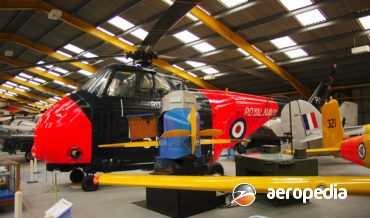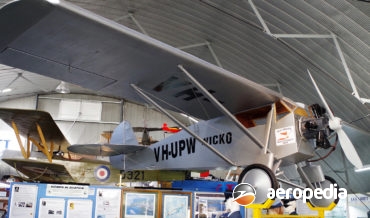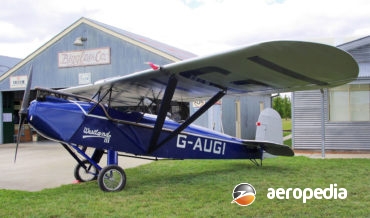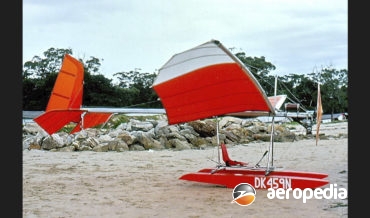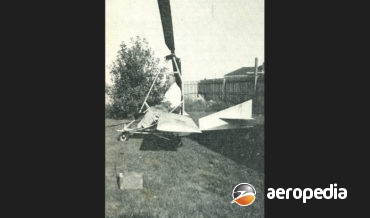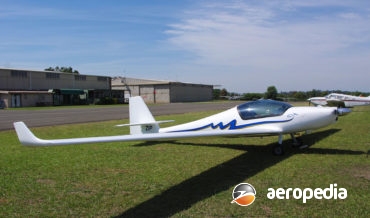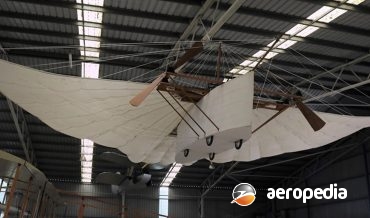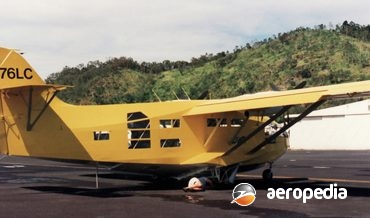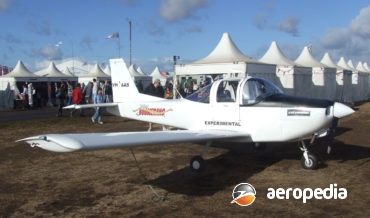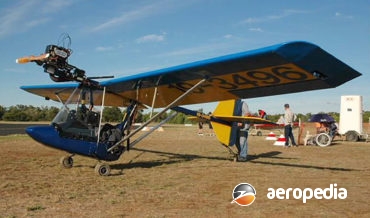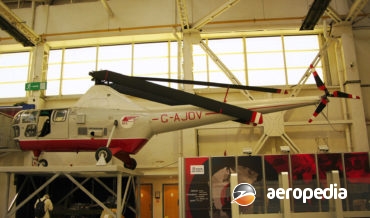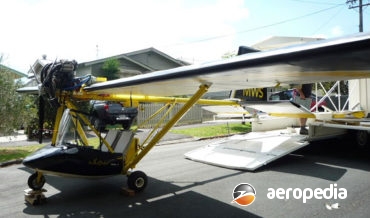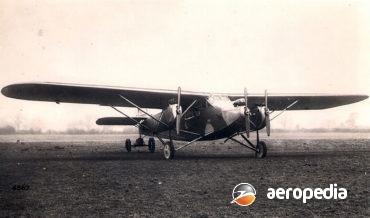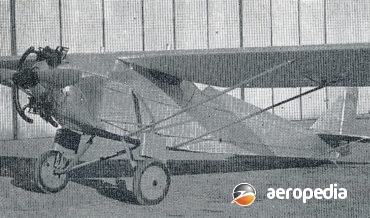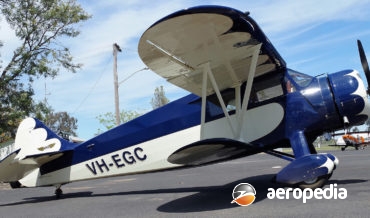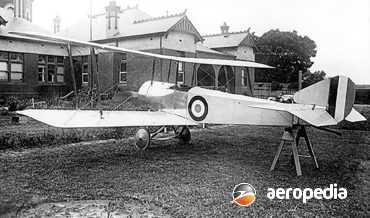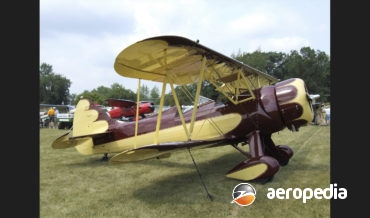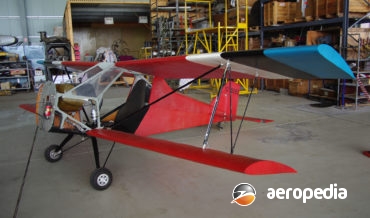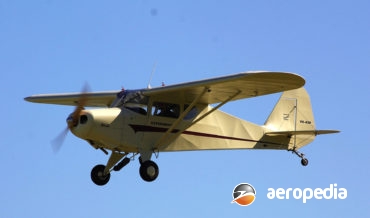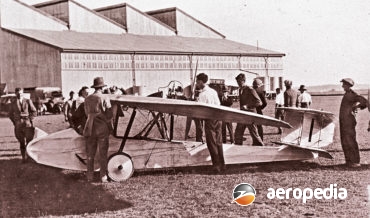All Contents
Contents
The Wicko Wizard was a wire-braced low-wing monoplane developed from the Lion powered by a four-cylinder 60-kw (80-hp) ADC Cirrus II engine (from Avro Avian VH-UFY).
David C. Eyre
- May 8, 2019
The Whirlwind was a development of the Sikorsky S-55, the prototype HAR-1 (XA862) flying for the first time on 21 August 1953 powered by a 448-kw (600-hp) Pratt & Whitney R-1340-40 radial engine and was later delivered to the Royal Navy.
David C. Eyre
- May 8, 2019
In 1929 Geoffrey Wikner purchased a second-hand but badly damaged Farman Sport biplane and rebuilt it, at that time registering a company as the Aircraft of Australia Aviation Co, and set about barnstorming in Queensland
David C. Eyre
- May 8, 2019
The Westland Widgeon, a parasol-wing aircraft with fabric covering and a spruce girder fuselage, was built for the 1924 Lympne Trials in the UK.
David C. Eyre
- May 8, 2019
The Wikopter was an experimental helicopter designed and built by Geoffrey Neville Wikner (1904 - 1990) at Trafalgar Heights, Nelson Bay, NSW.
David C. Eyre
- May 8, 2019
Ronald Wheeler was one of the people who foresaw the coming boom in ultralight aircraft in the 1970s and was a pioneer in this area.
David C. Eyre
- May 8, 2019
In the early 1960s Mr Leonard Williams designed and constructed a gyrocopter known by his friends as the Lennycopter.
David C. Eyre
- May 8, 2019
The Whisper is a self-launched motor-glider produced by Whisper Aircraft of Port Elizabeth in South Africa for the World market.
David C. Eyre
- May 8, 2019
Mr Geoffrey Williams, before his death in May 2002, designed five ultra-light (microlight aircraft in New Zealand) of his own design and built four. He was the son of a former World War II Avro Lancaster pilot and lived in the Dunedin area. His grandfather was a carpenter and Geoff
David C. Eyre
- May 8, 2019
Gustave Whitehead as he was known in the United States (born Gustav Albin Weisskopf on 1 January 1874 in Leutershausen in Bavaria) was born and raised in Germany and was trained in Augsburg as an engine builder.
David C. Eyre
- May 8, 2019
he Global Explorer I (N376LT) was designed by prolific aircraft designer Dean W Wilson and built to meet the requirements of explorers Hubert de Chevigny and Nicolas Hulot, the first machine flying for the first time in April 1991.
David C. Eyre
- May 8, 2019
The Boomerang was designed by Mr William “Bill” Whitney as a two-seat, all-metal, light training monoplane in 2003/04 to replace the many Cessna 152s and Piper Tomahawk in use around Australia with various training organisations.
David C. Eyre
- May 8, 2019
Designed as a simple to build and operate ultra-light aircraft, the Magpie was designed by Mr W “Bill” Whitney and was built and flown by Messrs Clyde Howard and Arnold Trapp.
David C. Eyre
- May 8, 2019
In early 2017 Morgan Aeroworks of Taree, NSW stopped production of its range of aircraft, comprising the Sierra and Cougar light sport aircraft, the owner of the Company, Gary Morgan, moving back to New Zealand.
David C. Eyre
- May 8, 2019
The Whitney scamp is a light sporting biplane with open cockpits designed by Mr W ‘Bill” Whitney in Queensland for amateur construction by Mr. Hargrave.
David C. Eyre
- May 8, 2019
In 1947 Westland Aircraft Co obtained a licence to build the Sikorsky S-51 in the United Kingdom for the British military services, this being a four-seat general purpose helicopter in service with the USAAF.
David C. Eyre
- May 8, 2019
The Fatboy is one of a series of ultra-light aircraft designed in the United Kingdom by Michael Whittaker, this being the first two seat side-by-side design produced by his company, with more than 200 sets of plans being sold by 2010.
David C. Eyre
- May 8, 2019
The Westland IV was designed and built by the Westland Aircraft Works at its Yeovil facility in Somerset in 1928, being an attractive small, high wing, taxi or feeder line aircraft constructed of wood, with fabric covering and fitted with tail parts from a Westland Wapiti.
David C. Eyre
- May 8, 2019
After construction of the Wikner Wicko, Geoffrey Neville Wikner designed and his company, Australian Aircraft Co at Archerfield, QLD, built a high-wing monoplane powered by the same 45-kw (60-hp) Anzani radial engine that had been fitted to the earlier aircraft.
David C. Eyre
- May 8, 2019
The brothers Leo Austin and Vivian Claude Walsh were interested in the aeroplane from about 1910 and at that time purchased materials and built an aircraft which was completed and flown in 1911 but the aircraft was destroyed in an accident.
David C. Eyre
- May 8, 2019
The Widgeon I was a single-engine amphibious biplane constructed with a wooden hull (Queensland maple) designed by Sqdn Ldr L J Wackett in 1923 and built by the RAAF Experimental Section at Randwick.
David C. Eyre
- May 8, 2019
War Aircraft Replicas of Tampa, Florida, was formed to design and market plans and kits of half-scale (50%) replicas of famous aircraft of World War II and since 1974 a number of designs have been made available to the amateur builder, types including the Sea Fury, A6M5 Zero, F4U Corsair,
David C. Eyre
- May 8, 2019
The Widgeon II was a re-design of the Widgeon I, being described as benefiting from the experience gained in the construction and operation of the earlier aeroplane.
David C. Eyre
- May 8, 2019
The Tomcat was an ultra-light design of canard configuration designed and produced in the United Kingdom by Waspair and later produced in the United States by Midwest Microlites.
David C. Eyre
- May 8, 2019
The Waco series of touring biplanes was first released in 1931 by the Weaver Aircraft Co (WACO).
David C. Eyre
- May 8, 2019
The Magpie was a light aircraft built by W F Watkins at Cootamundra.
David C. Eyre
- May 8, 2019
The Hadrian was designed by the Weaver Aircraft Company (Waco) to meet a requirement of the United State Army.
David C. Eyre
- May 8, 2019
The Watson Windwagon light aircraft were developed from the Parker Teenie Two series which was designed by Calvin Parker and built in some numbers around the world.
David C. Eyre
- May 8, 2019
The 2-T-1 light sports trainer biplane was introduced to the aviation market in 1929 by the Great Lakes Aircraft Corp of Cleveland Ohio, the prototype flying during that year.
David C. Eyre
- May 8, 2019
Basil George Watson was born in Bendigo, VIC on 12 October 1894 and was the son of a mining investor.
David C. Eyre
- May 8, 2019
The Waco 10 was launched in 1927 and certificated (ATC-13) in October that year. It was much improved on the Model 9, and was similar in layout and dimensions.
David C. Eyre
- May 8, 2019
The Fascination D4 is a two-seat side-by-side light kit-built aircraft produced by WD Flugzeugbau of Heubach, Germany.
David C. Eyre
- May 8, 2019
In November 1935 the Waco YPF-6 was certificated (ATC-586) in the United States.
David C. Eyre
- May 8, 2019
The 620A is an agricultural aircraft produced by the Weatherly Aviation Co of Lincoln, California, and is one in a series of aircraft produced in small volume by the company for this role.
David C. Eyre
- May 8, 2019
The Wag Aero Cuby is a redesign of the well known Piper Cub by the Wag-Aero group of Lyons, Wisconsin, using modern construction methods and materials, being aimed at the home-built market.
David C. Eyre
- May 8, 2019
The Sportsman is a light sporting aircraft produced in kit form by the Wag Aero Group at Lyons in Wisconsin.
David C. Eyre
- May 8, 2019
The WAACO Staggerbipe was first produced in the early 1980s by the West Australian Aircraft Company of Box Hill, VIC as a single-seat light sporting biplane and was made available in kit form for the amateur constructor.
David C. Eyre
- May 8, 2019
The Wag-A-Bond Traveller is a replica of the Piper PA-15 Vagabond series but much improved, with extra strength, comfort and performance, using modern construction methods and materials, and in recent years has been made available to amateur constructors in kit form by the manufacturers, Wag-Aero Group of Lyons, Wisconsin, USA.
David C. Eyre
- May 8, 2019
The Warbler was a parasol wing monoplane with internal bracing designed by Sqdn Ldr L J R Wackett, an officer in the RAAF at the time in charge of the Government Experimental Aeroplane Factory in Sydney.
David C. Eyre
- May 8, 2019
Recent Comments
Archives
Categories
- No categories
Categories
- No categories
Latest Posts
Newsletter


